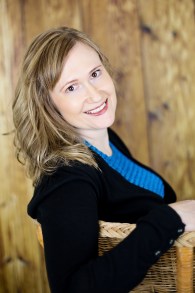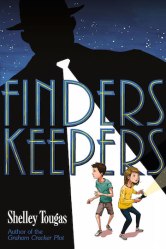Shelley Tougas writes fiction and nonfiction for tweens and teens. Shelley is a former journalist who also worked in public relations. Her award-winning book, Little Rock Girl 1957: How a Photograph Changed the Fight for Integration, landed on the top ten lists of Booklist and School Library Journal. Shelley lives near the Twin Cities.
Today, Shelley has joined us to talk about her new book, Finders Keepers (Roaring Brook Press 2015).
Christa spends every summer at the most awesome place in the whole world: her family’s cabin on Whitefish Lake in Wisconsin. Only her dad recently lost his job and her parents have decided to sell the cabin. But not if Christa can help it. Everyone knows Al Capone’s loot is hidden somewhere near Whitefish Lake, and her friend Alex’s cranky grandpa might have the key to finding it. Grandpa says the loot is gone, or worse -cursed – but Christa knows better. If she finds it, she can keep it and save her family and their beloved cabin.
Booklist gave it a starred review “A charming story of family history and personal connections (both lost and found) that is reminiscent of Blue Balliett and the Penderwicks‘ adventures.”
Finders Keepers is your second novel, but you have ten published nonfiction books as well. How does your nonfiction inform your fiction writing?
I was a journalist for seven years, so my background is nonfiction. Working at a daily newspaper is a writer’s boot camp. Deadlines range from a week to a frantic thirty minutes. When you have limited space, you learn to treat every word like gold. Clarity and economy are essential. There’s only room for the most telling details and the best quotes. I learned about everything from police investigations to murder trials to elections to sewer systems. I met fascinating people, including a man who walked around the world, a barbed-wire collector, young men who canoed from Canada to the Amazon, a family who raised wolves, an anti-government militant who barricaded herself from the FBI for three months, and so much more.
I did a little Internet research on gangsters in Wisconsin’s Northwoods and was surprised at how many Chicago criminals spent time there. How much of the Al Capone content is fact and how much is legend? How much of it did you make up?
I invented the characters and their adventure, but everything about Capone is based on facts and legends. Capone didn’t use banks or accountants, so even historians and journalists believe he hid money or gave it to colleagues for safe keeping. His illness caused him to be delusional, so he wasn’t making rational decisions. In 1986, journalist and entertainer Geraldo Rivera had a live television special during which his crew used dynamite to blast open a vault of Capone’s. He thought he’d find Capone’s loot and maybe even human remains. IRS agents were there to collect Capone’s estimated $800,000 in unpaid taxes. Thirty million people watched him enter the vault where he discovered … nothing.
The setting in Finders Keepers felt very real to me, even though I’ve never been there. How did you do that?
Christa’s beloved cabin on Whitefish Lake is actually my parents’ real cabin on Whitefish Lake. The difference is my parents’ cabin is part of a group of cabins near a lakeside restaurant. Christa’s cabin is a standalone place near the Clarks’ home, which is also invented. The town of Hayward does have a popular candy store with a fudge lady, an ice cream store, and the National Fresh Water Fishing Hall of Fame in the shape of a huge muskie. I think it’s safe to say there aren’t underground tunnels in town!
 Photo credit: Bobak Ha’Eri
Photo credit: Bobak Ha’Eri
If there was one single thing that you wanted readers to get from Finders Keepers, what would it be?
Put down your electronics, unleash your imagination, and play outside. That’s a message for adults, too.
What other books do you recommend to readers who enjoyed Finders Keepers?
It’s a bit self-serving to suggest my debut novel The Graham Cracker Plot [recently released in paperback], but it’s also a funny adventure story. Two novels I always recommend: Savvy by Ingrid Law and Three Times Lucky by Sheila Turnage. I recently read Lisa Lewis Tyre’s novel Last in a Long Line of Rebels, which is also about kids seeking a hidden treasure, and I loved it.
What’s your favorite thing about middle-grade fiction (as a reader or a writer)?
Kids are hilarious, often without meaning to be funny. I’ve had more laugh-out-loud moments reading kid lit than adult work.
What advice do you have for someone who wants to write middle-grade fiction?
Spend a lot of time with kids. Listen to the way they talk and observe how they handle conflict and problems. Read your work out loud to kids and pay attention to their body language. If they’re staring out the window, you know you’ve got work to do. My daughter is my first editor. My early draft of The Graham Cracker Plot opened with backstory. When I read it to my daughter, she said, “Mom, it’s really good. But when is the story going to start?” And she was right. In middle-grade novels, you need to invite the readers immediately. Most are impatient and won’t wade through a sluggish beginning.
Shelley has kindly offered to give away a copy of Finders Keepers. Leave a comment below by midnight on Monday, November 30 and the winner will be announced on Tuesday, December 1.
Jacqueline Houtman is the author of the middle-grade novel The Reinvention of Edison Thomas (Front Street/Boyds Mills Press 2010) and coauthor, with Walter Naegle and Michael G. Long, of the biography for young (and not-so-young) readers Bayard Rustin: The Invisible Activist (Quaker Press 2014).













